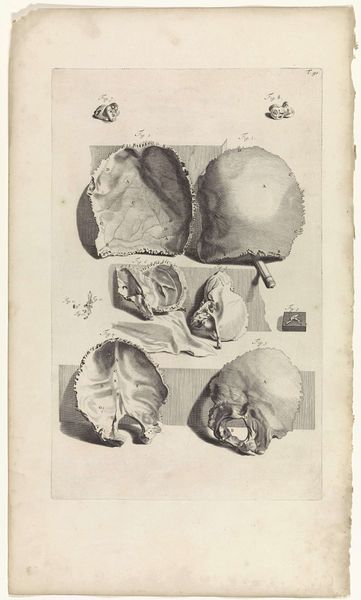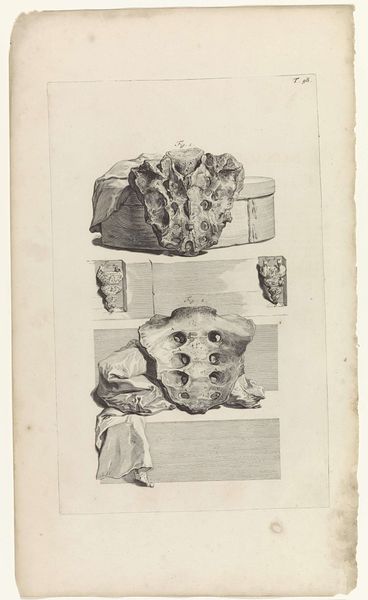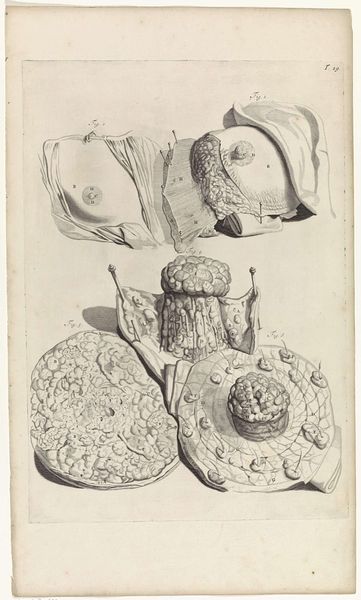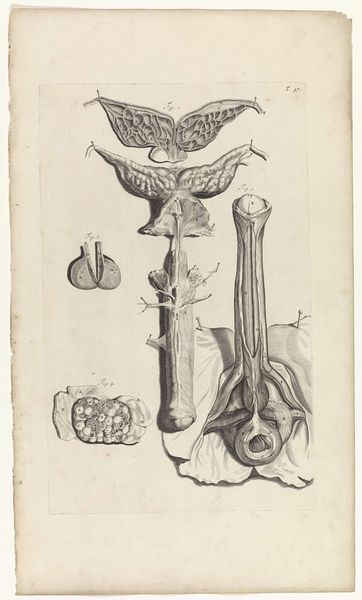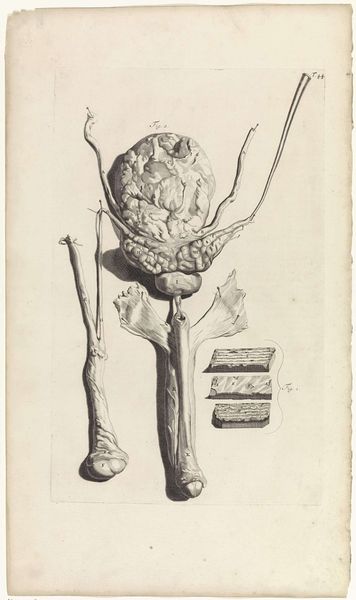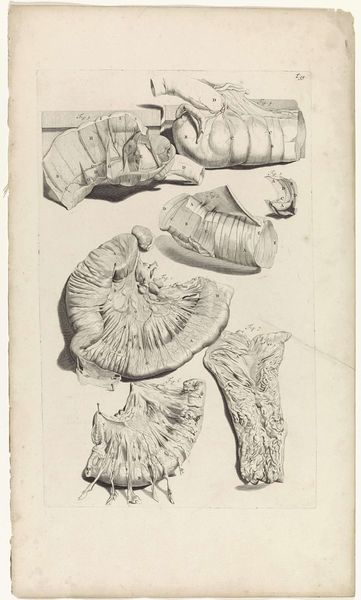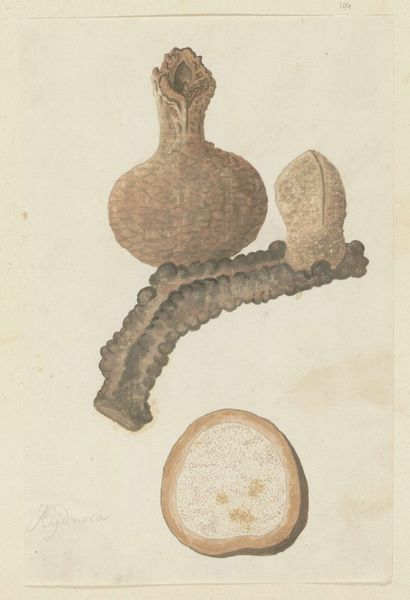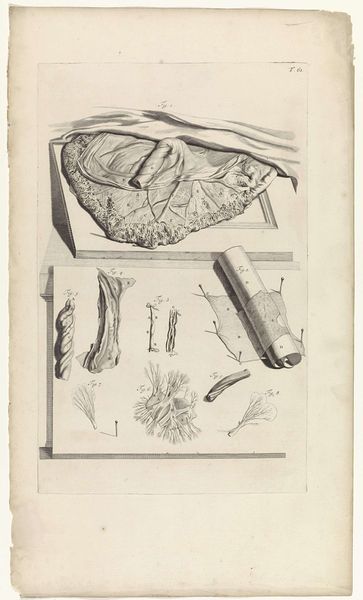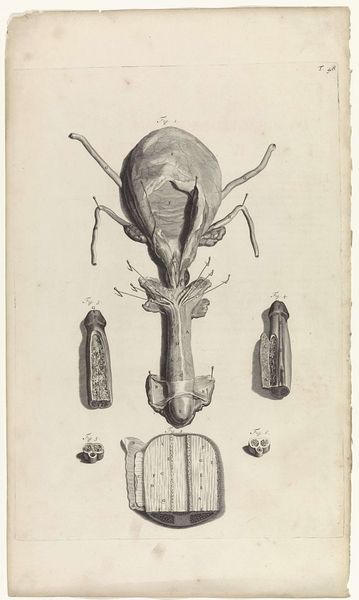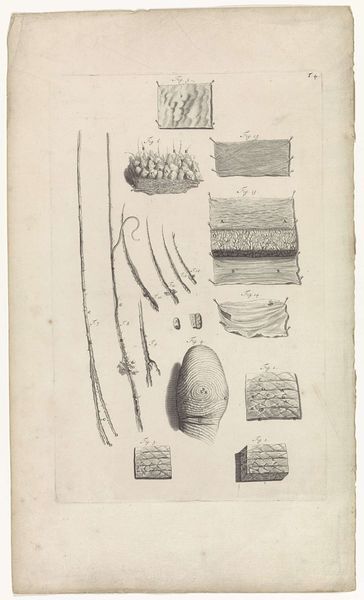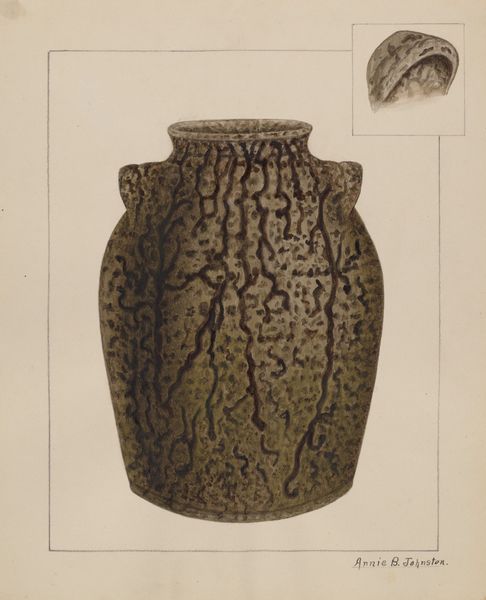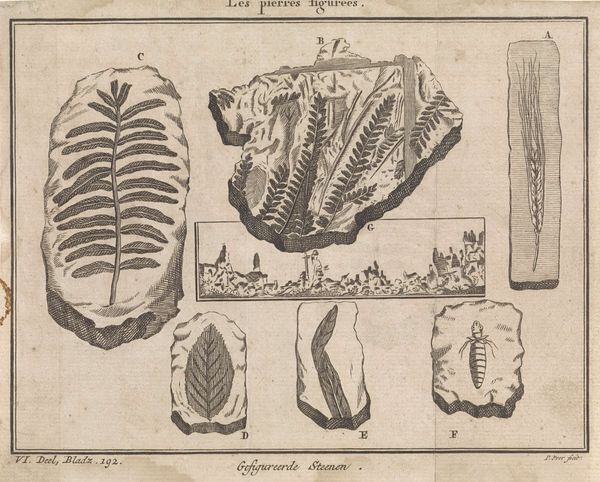
print, engraving
#
baroque
# print
#
old engraving style
#
line
#
history-painting
#
academic-art
#
engraving
#
realism
Dimensions: width 297 mm, height 475 mm
Copyright: Rijks Museum: Open Domain
Pieter van Gunst made this anatomical study of the inside of a stomach with burin and etching around the turn of the 18th century. This Dutch print reflects the increasing importance of scientific observation, documentation, and the rise of institutions dedicated to scientific research. Knowledge of anatomy was expanding, and with it came new ways of thinking about the human body. The stomach is presented almost like a dissected architectural space, with a focus on rational and objective observation, which gained traction with the rise of the Dutch Republic's universities. The artist has rendered the organ with a detached scientific curiosity, which mirrors the wider cultural shift towards a belief in empirical evidence and rational inquiry during the early Enlightenment. To understand the piece fully, it's important to remember that the meaning of art is deeply rooted in its time. Further research into the medical practices and scientific thinking of the 18th century in the Netherlands could provide a better understanding of how this print was originally understood and used.
Comments
No comments
Be the first to comment and join the conversation on the ultimate creative platform.
